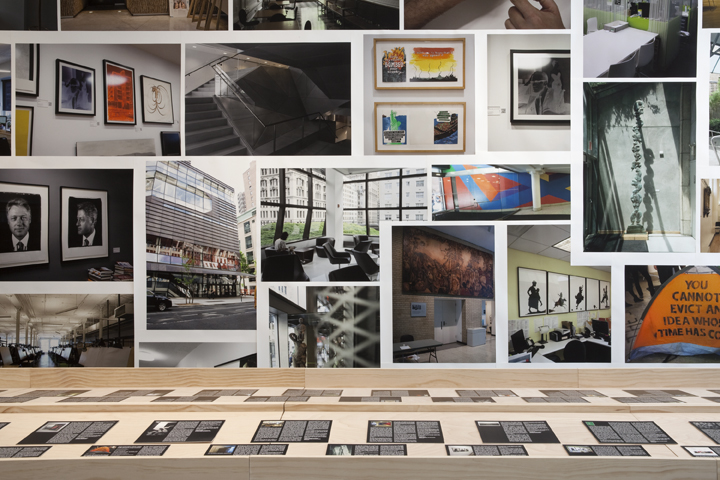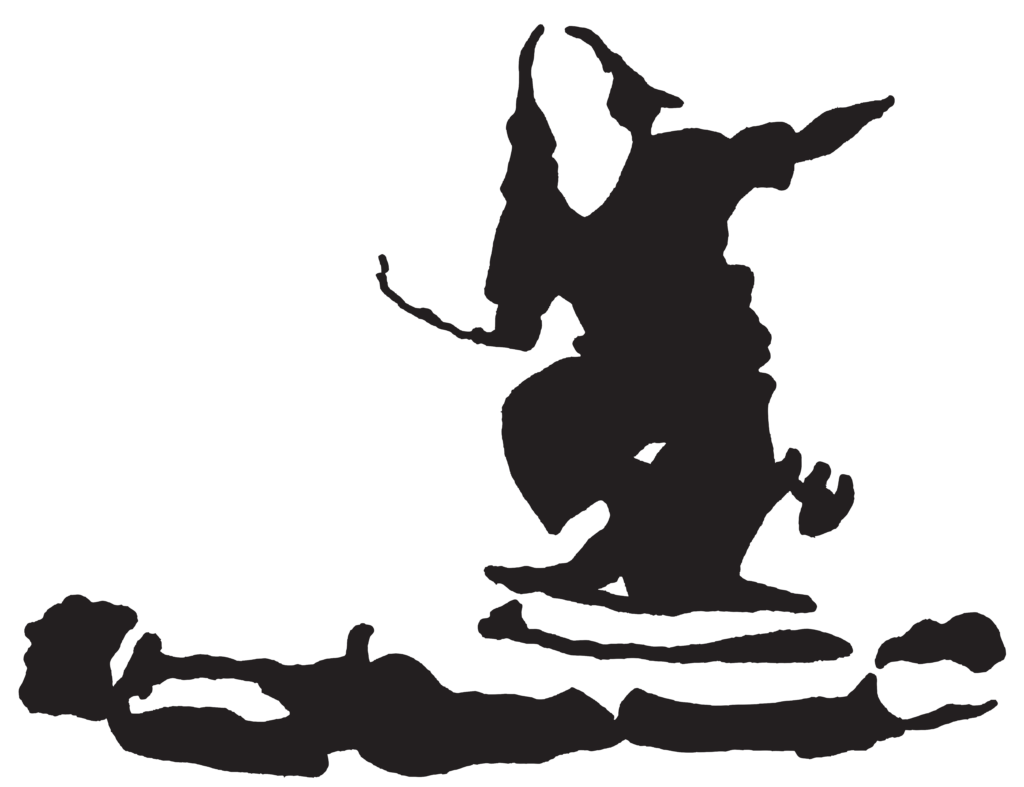
Summer 2014
Twenty-five years ago, a furor erupted at The New School when Sekou Sundiata, poet, performer, and professor, at Eugene Lang College, stung by an image exhibited in the Parsons Galleries, scrawled his dissent across it. His “X” inspired others and soon there were over 40 signatures covering the image. Part of an exhibition of the work of Japanese designer Shin Matsunaga, the offending image was a minstrel show blackface figure, the long-time logo of a Japanese soft-drink company. It was 1989 amid the “culture wars” when representations of race, religion, and homosexuality were under attack by the religious right in an aggressive campaign against the National Endowment for the Arts.
The responses at the university were complex: They ranged from celebrations of freedom of expression to questions of artistic censorship and defacement; from expressions of extreme distress and anger; to reviews of procedures for exhibitions, contextual signage, and disclaimers.
This wasn’t the first time art and politics had met in a volatile conjuncture at The New School. Each time, controversy torqued the relationship between the identity born of the school’s founding ideals – “freedom of opinion, of teaching, of research, of publication,” as its first director, Alvin Johnson put it – and the experiences of its constitutively diverse community.
This exhibition explores the ways in which offense has been given (and taken) and dissent expressed (and managed) through three incidents in the history of The New School: the 1951 and ’53 curtaining of the University’s signature Orozco murals during the Red Scare years; the 1970 anti-war exhibition put up by Parsons students in lieu of a senior show, in solidarity with the National Student Strike in the aftermath of the Kent State shootings and the U.S. bombing of Cambodia; and the 1989 Matsunaga affair. Memoranda, letters, posters, press coverage, catalogues, illustrations, and interviews, largely drawn from The New School Archives and Special Collections, trace the rapid-fire interchange of perspectives and reactions in each instance. They demonstrate the ongoing power of images to inspire and to wound.
We found both a challenge and a guide in the words of Milano Associate Dean John Jeffries, who wrote in an inter-office memo to the University president regarding the Matsunaga exhibition image, “perhaps… a clearly articulated context would justify the display of such offensive items,” but “[h]aving viewed exhibitions that have been organized around such themes, I can tell you that the rationale although ‘legitimate’ in some cerebral sense, does little to ease the pain associated with the viewing.” This led us, in turn, to ask what sorts of contexts could house such an image. How do the claims an institution makes about itself actually manifest in practice? What are the overt and subtle inclusions and exclusions perpetrated within and on its walls? Who bears the responsibility for these actions and claims? And when, how, and by whom are situations repudiated through disclaimers and disavowals and dissent? Into these historical debates, we invited current New School faculty, staff and students to respond to the provocations and pleasures of their present university environment—looking either at works from The New School Art Collection that hang across the campus or the design of university spaces that govern the rhythms of everyday life in this institution. Their spirited observations and questions about what they see and experience unsettle the ways in which rights, place, and belonging are understood in an educational context.
At the SJDC, this is the second exhibition to explore the diversity of the University community, asking who we mean when we say “we”.


RED SCARE, YELLOW CURTAIN
1931 – 1962

GRAPHIC PEACE OFFENSIVE
1969 – 1970

THE MATSUNAGA AFFAIR
1989 – 1994
Curators: Julia Foulkes, Mark Larrimore, and Radhika Subramaniam
/ Research Assistant: Laura Wing / Exhibition Design: Manuel Miranda with XXX / SJDC Exhibition team: Ryan Caruthers, Nelson Choi, Allison Franks-Schlegel, Will Fu, Kristina Kaufman, Max C. Resetar, Tasheena Sackes-Bramble, and Daisy Wong / The New School Archives and Special Collections: Liza Harrell-Edge, Jeesu Kim, Wendy Scheir, and Jeanne Swadosh / Red Scare, Yellow Curtain (editorial comic strip): George Bates / The Matsunaga Affair (editorial design): Dimitry Tetin / Photography: Lior Tamim Japanese Translation: Kazue Kurahara / Original material by Sekou Sundiata included with the kind permission of Maurine Knighton / The curators wish to thank the following for their insights, support, and contributions: Paula Austin / Kathleen Bailey / Gayle Binney / Nadine Bourgeois / Curatorial Design Research Lab / Tomoyo Kamimura Fontein / Maurine Knighton / Kazue Kurahara / Howard Leung / Tim Marshall / Paula Maas / Lydia Matthews / Michele Washington / Roy Moskowitz / Kazuhide Okunami / Silvia Rocciolo Ann Rosenthal / Susan Sawyer / Ann Snitow / Ari Spool / David van Zandt / Website: Anahita Bagheri


